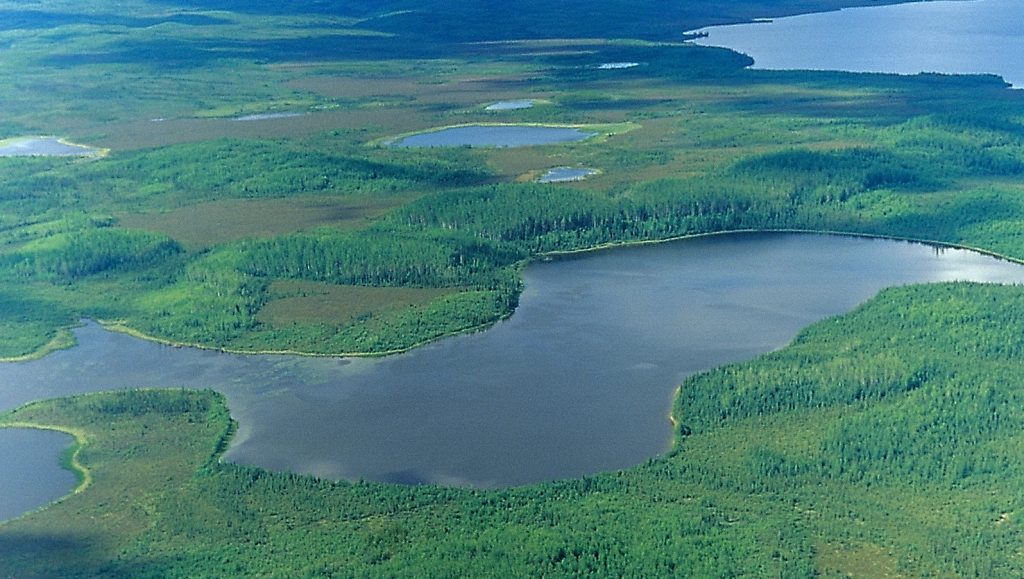
Features
Environment & Sustainability
Forestry
AB establishes world’s largest protected boreal land
May 16, 2018 By P&PC staff
 The Caribou Mountains are a part of the world's largest protected boreal forest.
The Caribou Mountains are a part of the world's largest protected boreal forest. May 16, 2018 – The world’s largest contiguous area of boreal protected land has been established in northern Alberta through a five-way partnership.
The land area amounts to more than 6.7 million hectares of boreal forest. Partners in the establishment of the protected zone include the Alberta government, the federal government, the Tallcree First Nation, Syncrude and the Natural Conservancy of Canada.
The creation of the Kazan, Richardson and Birch River wildland provincial parks connects the federal government’s Wood Buffalo National Park to other existing wildland provincial parks.
The new and expanded wildland provincial parks are: Kazan, Richardson, Dillon River, Birch River and Birch Mountains. In total, these northern Alberta parks contribute more than 1.36 million hectares to the province’s protected area network.
This is the largest addition to the Alberta Parks system in its history, and will constitute the largest contiguous protected boreal forest in the world under the guidelines of the International Union for Conservation of Nature.
“Alberta-Pacific Forest Industries Inc. (Al-Pac) extends our support and congratulates the Government of Alberta as it formalizes the creation of the world’s largest network of protected areas in Canada’s boreal forest,” Elston Dzus, forest ecologist, Alberta-Pacific Forest Industries Inc.,said. “Al-Pac has long recognized the importance of conservation areas as an integral part of managing human activity in the boreal forest for the long-term benefit of both biodiversity and the economy.”
Identified in the Lower Athabasca Regional Plan (LARP) in 2012, the new parks were fully reviewed to ensure there are no economic impacts on natural resource industries or communities. Industry tenures in the parks were compensated years ago, leaving the lands free for protection.
For the five new and expanded wildland provincial parks, the Government of Alberta proposes to enter into cooperative management arrangements with Indigenous communities. Indigenous advice and knowledge will inform decision-making and management of these lands, and the province will provide resources to support this process.
In addition, Alberta plans to integrate an indigenous guardian program into these wildland provincial parks. Under this program, First Nations and Metis peoples will be hired to monitor the areas, help maintain the lands and provide education and outreach to park visitors.
Treaty 8’s Tallcree First Nation, in cooperation with the NCC and the Alberta and federal governments and with support from Syncrude, relinquished their Birch River area timber licence and quota to enable one of the new parks (Birch River WPP) to proceed.
“This collaboration between the Nature Conservancy of Canada, the governments of Canada and Alberta, and industry are aligned with the Tallcree Tribal Government’s values regarding the preservation of the boreal forest,” Rupert Meneen, chief, Tallcree First Nation, said. “The boreal forest holds greater value to the First Nation for exercising our traditional way of life and the quiet enjoyment of our treaty rights.”The Government of Alberta thanked the Tallcree First Nation for working with the government and the NCC to achieve this historic outcome. Alberta and the Tallcree First Nation have agreed to manage the Birch River WPP with mutual benefit toward conservation and economic opportunities.
In addition, the environmental benefits created through the establishment of the Birch River WPP will provide conservation offsets that Syncrude can apply towards future industrial activities.
Establishing the wildland provincial parks (WPPs) will mean a protected area that is more than twice the size of Vancouver Island (32,000 square kilometres), slightly smaller than the province of New Brunswick (72,908 square kilometres), slightly bigger than the Great Bear Rainforest in British Columbia (64,000 square kilometres), and 10 times the size of the Greater Toronto Area (7,124 square kilometres).
Print this page